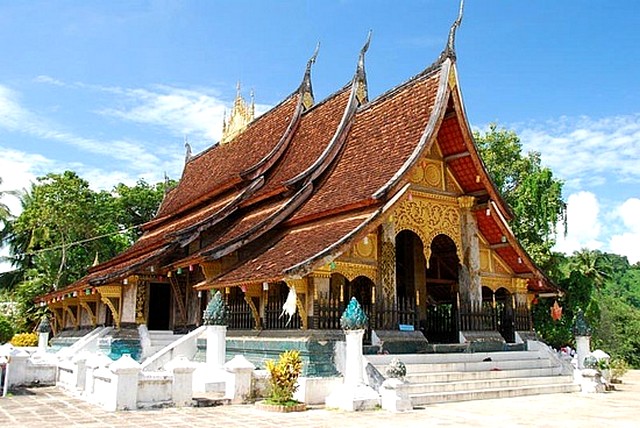Wats, Waterfalls and World Heritage Sites in Laos
Wats, Waterfalls and World Heritage Sites in Laos. Laos is an up and coming destination on the South East Asian tourist trail with many travellers attracted to this landlocked country due to its laidback lifestyle and stunning mountainous landscapes. From saffron-robed monks receiving alms to golden stupas, explore the best sites and attractions that Laos has to offer.
The lush scenery, vast waterfalls and untouched natural ambience makes Si Phan Don a destination for travellers and locals alike. Many stop off at the collection of islands before journeying into Laos proper or down to Cambodia. If you find yourself in Si Phan Don, be sure to hire a boat to Lee Pi Waterfalls in order to catch a peek at the endangered Irrawady Dolphin. If you don’t manage to spot this elusive mammal, then the very impressive Khon Phapheng waterfall is nearby, offering a momentous view of the biggest cascade along the Mekong River.
Luang Prabang
The delightful city of Luang Prabang (once the capital of Laos) is considered to be the spiritual heart of the country. Blending a rich meld of French and Indochina architecture, the area is an outstanding example of the fusion between traditional architecture and Lao urban structures; especially those built by the European colonial authorities in the 19th and 20th centuries. The incredibly well preserved townscape illustrates a key combination of two distinct cultural traditions, and earned its reputation as a UNESCO World Heritage site in 1995.Patuxai Victory Monument
Patuxai or Victory Monument is one of the most recognisable landmarks in Laos and a distinctive figure on the Vientiane skyline. Situated at the end of one of the capital’s grandest avenues, the large square arch is very much reminiscent of the Arc de Triomphe in Paris. Forming the centrepiece of Patuxai Park, the monument is dedicated to the Laos people who were killed in the fight to gain independence from France, as well as the nation’s earlier occupiers, Japan And Siam. Patuxai serves as a monument to honour Laos’ resilience and eventual independence, paying homage to its national culture and traditions.Pha That Luang
Pha That Luang is a huge gold-covered Buddhist stupa in the centre of Vientiane, and is generally considered as the most important national monument in Laos. Since it’s initial establishment the stupa has undergone several reconstructions, especially since the invasions of the area in the 1930s. Built in the shape of a grand pyramid, the stupa measures approximately 69 metres long and 45 metres high, and is encrusted with thousands of pounds worth of gold leaf. The Buddhist temple is located next to the Laotian Parliament, and is clearly seen from the top of the Patuxai Arc in downtown Vientiane.Si Phan Don
Si Phan Don roughly translates from Laotian as ‘Four Thousand Islands’. This scenic 50-kilometre stretch along the Mekong River is located just north of the Cambodian border. During the rainy season, the river reaches a colossal breadth of 14 kilometres (the widest width of the Mekong along its length from China to Vietnam); and in the dry season, the waters recede and leave behind thousands of islands and islets.The lush scenery, vast waterfalls and untouched natural ambience makes Si Phan Don a destination for travellers and locals alike. Many stop off at the collection of islands before journeying into Laos proper or down to Cambodia. If you find yourself in Si Phan Don, be sure to hire a boat to Lee Pi Waterfalls in order to catch a peek at the endangered Irrawady Dolphin. If you don’t manage to spot this elusive mammal, then the very impressive Khon Phapheng waterfall is nearby, offering a momentous view of the biggest cascade along the Mekong River.









Comments
Post a Comment